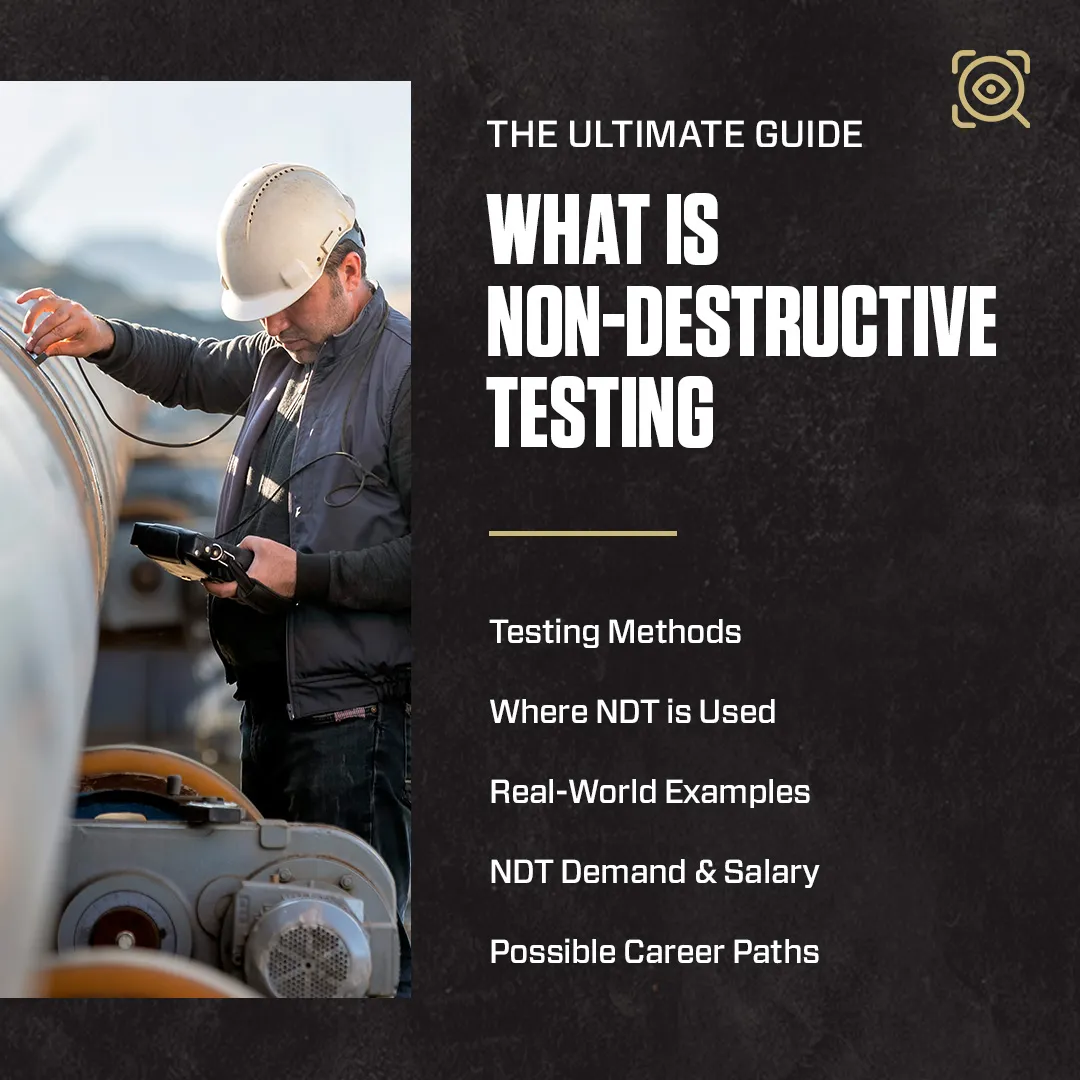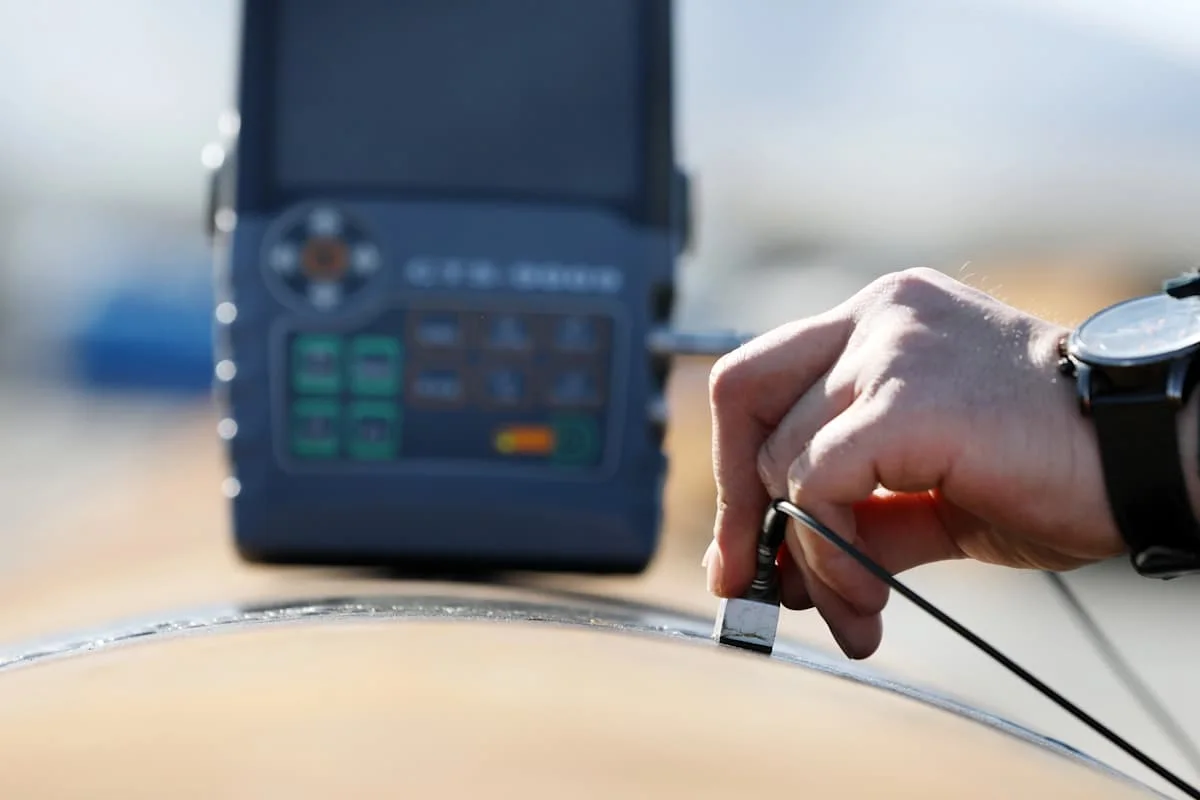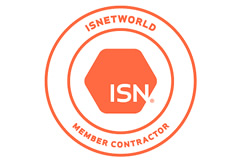
Non-destructive testing (NDT) is a set of testing and analysis processes that evaluate the quality and structural integrity of a manufactured product. Factories and manufacturing plants commonly use NDT. However, some unexpected fields, such as medicine, have also found a use for it.
NDT technician skills are of value to various industries because they save them time and money and determine safety with a high level of accuracy.
Want to learn more about NDT? In this blog post, we’ll define non-destructive testing in further detail and share how you can train to pursue a career in NDT.
Key Points:
– Non-destructive testing (NDT) is a crucial process used in various industries to inspect the integrity of products without causing damage, ensuring they meet specific standards and are safe for use. This method is preferred over destructive testing (DT) as it allows products that pass inspection to continue through the supply chain, saving time and resources.
– NDT is valuable across multiple sectors, including manufacturing, aerospace, automotive and even unexpected fields like medicine, due to its ability to save time, reduce costs and ensure safety and product quality with high accuracy.
– There are several common NDT methods, including eddy current testing, visual penetrant testing, magnetic particle testing, radiography testing and ultrasound testing. Each technique has its own unique application and is chosen based on the specific requirements of the inspection.
– Aspiring NDT technicians typically require formal education and training to enter the field, with programs like the one offered by Universal Technical Institute (UTI) providing comprehensive hands-on training in various NDT methods.1 Graduates are prepared to pursue entry-level positions and may be able to advance in their careers with experience and additional certifications.6
What Is Non-Destructive Testing?
Non-destructive testing (NDT) is sometimes referred to as non-destructive evaluation (NDE), non-destructive examination (NDE) or non-destructive inspection (NDI).
Each of these titles involves the same process of inspecting the integrity of a product without destroying it. In other words, as long as the product meets set specifications, it should still be usable once the testing is complete.

Many industries prefer NDT to destructive testing (DT), where technicians analyze a material by pushing it to failure. Because destructive testing destroys products, companies must allocate resources to create samples for testing. On the contrary, if a product passes NDT, it can move through the supply chain.
Not only does this save companies time and money, but it also creates a more accurate testing process and improves customer satisfaction. Let’s dive a bit deeper.
What are destructive and non-destructive testing?
Destructive testing (DT) and non-destructive testing (NDT) are techniques for evaluating the properties and integrity of materials in various industries, including construction, manufacturing and aerospace.
Destructive testing involves physically damaging or destroying the material to assess its characteristics, such as tensile strength, impact resistance and fatigue limits. Common DT methods include tensile testing, hardness testing and impact testing.
While DT provides comprehensive data about material properties, it renders the tested sample unusable. In contrast, non-destructive testing evaluates materials without causing any damage, allowing them to remain in service. So, how do you test a product’s strength without pushing it to its breaking point? NDT relies on technology and science to do so.
NDT methods include ultrasonic testing, radiographic testing, magnetic particle testing and eddy current testing. These techniques detect surface and subsurface defects, ensuring safety and reliability without compromising the material’s integrity. The primary advantage of NDT is its ability to maintain the usability of the tested item, making it ideal for ongoing maintenance and inspection.
Non-Destructive Testing Methods
There are many ways to carry out NDT inspection. The six most common types of non-destructive testing include eddy current (ET), visual testing (VT), magnetic particle testing (MT), radiographic testing (RT), ultrasonic testing (UT) and liquid dye or penetrant testing (PT).

UTI teaches each method in its Advanced Non-Destructive Testing Technician program. Read more about these NDT techniques below.
Eddy current testing (ET)
Eddy current (ET) is a type of electromagnetic testing. This type of NDT introduces an electric current or magnetic field to a workpiece.
In this method, an alternating current coil is used to create an electromagnetic field. When the magnetic field forms, so do eddy currents. The eddy currents then counter the magnetic field by forming a second one.
This process allows NDT technicians to examine the currents’ behavior closely. If the currents present abnormally over a certain part of the workpiece, there are likely discontinuities or flaws, such as cracks.
Visual penetrant testing (VT)
Visual testing (VT) testing, also known as visual inspection, is an NDT method that involves visually inspecting a component to determine whether it needs maintenance.
It’s the most common NDT method used across industries and can be used at any stage of a component’s lifecycle. VT is often the first step in the examination process for products like castings, forgings, machined components and weld elements.
Liquid or dye penetrant testing (PT)
Liquid or dye penetrant testing (PT) is a non-destructive material testing method that uses capillary forces to find surface cracks or pores and make them visible. It can detect surface-breaking flaws such as cracks, laps and porosity.
Magnetic particle testing (MT)
Magnetic particle testing (MT) identifies impurities on or just below the surface of a workpiece by creating a magnetic field using a permanent magnet or electromagnet. An electromagnet requires a current.
Both methods create magnetic flux lines that alter in the presence of impurities. Unfortunately, this isn’t visible to the human eye. Therefore, NDT technicians add colored magnetic particles in powder or liquid form. If flaws are present, the particles will gravitate toward them for the NDT technician to examine.
Radiography testing (RT)
In radiography testing (RT), a radiographic film is placed on the opposite side of the metal part. The technician applies a radiation source, such as an X-ray, to the part. It passes through both the test object and film.
If there are discontinuities in the metal part, the radiation will darken the film in this area.
Ultrasound testing (UT)
In ultrasound testing (UT), a transducer transmits through a test piece via a probe. The sound wave travels through the material. If the sound wave hits a reflector or flaw within the material, it will return to the transducer as an electric impulse.
These electric impulses are typically displayed on a screen for the NDT technician to evaluate.
Where Is Non-Destructive Testing Used?
While NDT can be used in a variety of environments, the Bureau of Labor Statistics (BLS) lists the following industries as the most common:
- Architectural, engineering and related services
- Machinery manufacturing
- Transportation equipment manufacturing
- Scientific research and development services
- Computer and electronic product manufacturing
NDT technicians may also be employed in the mining, aerospace, automotive, power generation or oil and gas industries.
Real-World Non-Destructive Testing Examples
To communicate how significant NDT inspection is to our everyday lives, we’ll specify a few ways it is used in the real world. Non-destructive testing examples include:
- Testing manufactured medical devices to ensure they’re durable and functional
- Testing pipelines that carry hazardous materials like oil and nuclear elements
- Testing welds for the transportation, automotive and infrastructure industries
- Evaluating the condition and lifespan of equipment used in manufacturing, oil refineries and more
NDT technicians have a job that matters. They can prevent accidents, maintain important machines and structures, guarantee product quality and more.
If this sounds like shoes you’d like to fill, keep reading to learn about the career outlook for an NDT tech.
NDT Demand and Salary Outlook
According to the BLS, total NDT technician employment is expected to exceed 76,000 by 2032!76
A career in NDT could be a good path for the right candidates. Per the BLS, the median annual salary for NDT technicians in the United States was $73,500 in May 2023.62 This means half of NDT technicians earned more and half earned less. Keep in mind salary depends on several factors, including experience, employer, demand and cost of living in the area.
Before pursuing careers in this industry, most aspiring technicians attend a trade school to learn the complex processes associated with non-destructive testing. UTI’s NDT technician program teaches from the ground up, providing students with a base of knowledge they can build upon.1
Potential NDT Career Paths
There are multiple career paths NDT technicians can pursue. However, most begin in entry-level positions in one of the industries mentioned above. Common entry-level positions include NDT technicians, quality control technicians and inspectors.

Most of our grads start out working as entry-level technicians or in other entry-level roles. As with any industry, over time, you may be able to advance in your career with experience and hard work.
Experienced NDT technicians may advance into positions such as industrial radiographers, NDT/NDE technician level I, RT assistants or QC/QA inspector assistants.77
Non-Destructive Testing Schooling
Aspiring NDT technicians can prepare for careers in this field by completing a training program. NDT is a highly complex field that could be difficult to break into without a formal education. Upon completing a training program, graduates have a foundation of knowledge to build on.
UTI’s nine-month training program provides students with over 800 hours of hands-on training in a lab. Throughout those nine months, students will take the following courses:
- Eddy Current Theory and Application I & II
- Magnetic Particle Theory and Application I & II
- Penetrant Theory and Application I & II
- Radiography Theory I
- Ultrasound Theory and Application I & II
- Visual Theory and Application I & II
These topics prepare them to examine the properties of a material, component, structure or system and ensure it’s free of defects.
Non-Destructive Testing FAQs
What are the different NDT techniques?
NDT employs several techniques, and each one serves a unique purpose. The type of technique a technician should use depends on the industry or company’s needs. We teach the following primary techniques: eddy current (ET), visual testing (VT), magnetic particle testing (MT), radiographic testing (RT), ultrasonic testing (UT) and liquid dye or penetrant testing (PT).
How long does it take to get NDT certified?
To become certified, aspiring NDT technicians require formal training and on-the-job hours. Upon completing a training program and securing employment, your employer can lead you through certification if needed.
What certification is best for NDT?
The American Society for Non-Destructive Testing (ASNT) has distinguishable certifications that are internationally recognized. Becoming certified typically requires formal training as well as on-the-job experience. ANST offers multiple certifications. An employer can help prepare you for the right one.
Train for Non-Destructive Testing at UTI
NDT technicians are responsible for ensuring the integrity of materials, structures and components crucial to various industries and our day-to-day activities.
Taking on this responsibility is a lot of pressure but can be very exciting for anyone who is detail-oriented, enjoys being challenged and has a passion for science and technology. Are you up to the challenge?
If so, request info to learn more about our Advanced Non-Destructive Testing Technician training program today.





